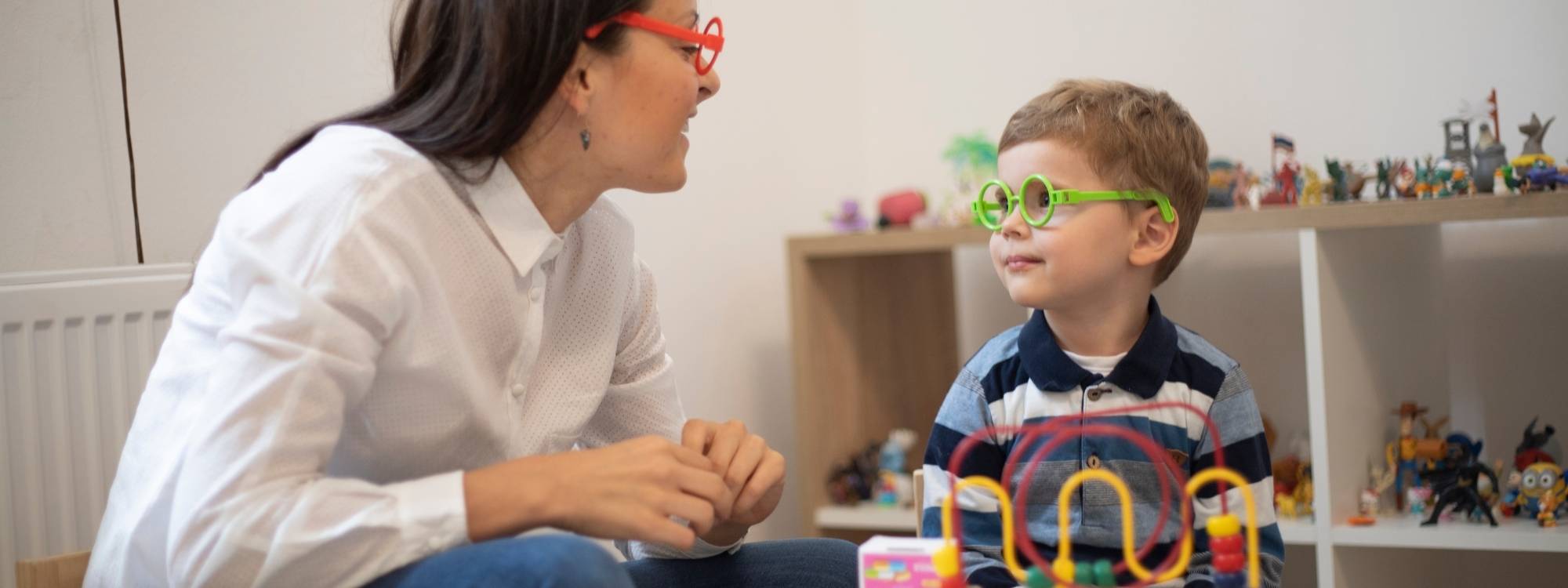What Does ABA Therapy Do? A Complete Guide
Applied Behavior Analysis (ABA) therapy is a widely recognized and evidence-based treatment designed to improve behaviors, learning skills, and social interactions in individuals, particularly autistic children and those with other developmental disorders. This therapy is structured to help children develop communication skills, reduce challenging behaviors, and enhance daily living abilities.
With its foundation in behavioral science, ABA is often recommended by medical professionals, schools, and autism specialists. But what does ABA therapy do? How does it work, and why is it considered one of the most effective interventions for autism? This guide will break down the essential components of ABA, its benefits, and how it helps children and adults develop necessary skills for a better quality of life.
What is ABA Therapy?
Applied Behavior Analysis (ABA) is a scientific approach that focuses on understanding and improving specific behaviors through structured interventions. It is based on the principles of behavior analysis, which emphasize how learning and behavior are influenced by environmental factors.
ABA helps children and individuals with autism by encouraging positive behaviors while reducing challenging behaviors through reinforcement techniques. It is not a one-size-fits-all approach; instead, ABA therapy programs are highly individualized, tailored to meet the unique needs of each child or adult receiving therapy.
Key features of ABA include:
- Data-driven strategies to measure progress and refine interventions.
- Individualized treatment plans created by a trained behavior analyst.
- Skill-building programs focused on communication, social interactions, and learning skills.
Because ABA therapy focuses on changing behavior in meaningful ways, it is widely applied in different settings, including schools, clinics, and homes, to help individuals achieve greater independence in their everyday lives.
How Does ABA Work?
ABA therapy follows a structured process that involves assessment, goal setting, intervention, and continuous evaluation. The therapy is delivered by Board Certified Behavior Analysts (BCBAs) and Registered Behavior Technicians (RBTs) under direct supervision to ensure evidence-based interventions are effectively applied.
Step 1: Assessment & Goal Setting
Before therapy begins, an ABA therapist conducts a functional behavior assessment (FBA) to evaluate the individual’s strengths, weaknesses, and specific behaviors. This helps in understanding the child’s ability level, problem behaviors, and the best techniques to implement.
Step 2: Developing an Individualized ABA Treatment Plan
Based on the assessment, the therapist identifies target behaviors to work on, whether it’s improving eye contact, reducing negative behaviors, or enhancing language development. Goals are broken down into small, measurable steps to ensure steady progress.
Step 3: Implementing ABA Procedures & Techniques
The therapist uses a combination of ABA procedures depending on the individual’s needs, including:
- Discrete Trial Training (DTT): Breaking tasks into smaller steps and reinforcing correct responses.
- Natural Environment Teaching (NET): Learning through real-world interactions and everyday activities.
- Picture Exchange Communication System (PECS): Teaching functional communication skills using visual aids.
- Task Analysis & Chaining: Helping children master complex skills by breaking them down into smaller, sequential steps.
Step 4: Monitoring Progress & Making Adjustments
ABA therapy is an ongoing process. Therapists continuously measure progress by collecting data and adjusting interventions based on outcomes. The goal is to ensure positive outcomes by reinforcing desirable behaviors and reducing behaviors that interfere with learning.
Who Can Benefit from ABA Therapy?
ABA therapy is primarily used for autistic people, but it also benefits individuals with other developmental disorders and behavioral challenges. It is suitable for:
- Autistic children and adults: Helping them develop social interactions, communication skills, and academic skills.
- Children with developmental delays: Supporting learning and functional communication.
- Individuals with ADHD and behavioral challenges: Teaching impulse control and reducing problem behaviors.
ABA therapy services are designed for individuals of all ability levels and can be adapted to meet their unique needs, ensuring each person receives the right support for skill development and behavior change.
Core Techniques Used in ABA Therapy
ABA therapy focuses on positive reinforcement to encourage learning and behavior improvement. The following are some of the most effective interventions used in therapy sessions:
- Positive Reinforcement: Encouraging desired behavior by rewarding individuals when they demonstrate positive behaviors.
- Prompting & Fading: Using verbal or physical prompts to guide responses, then gradually reducing them as the child learns.
- Token Economy System: Implementing a structured reward system to reinforce learning skills and appropriate behaviors.
- Social Skills Training: Helping children develop better social interactions through structured activities.
Each technique is selected based on the child’s therapist recommendations and the child’s progress, ensuring interventions are personalized and effective.
How is Progress Measured in ABA Therapy?
Progress in ABA therapy is continuously tracked to evaluate effectiveness and ensure the child learns necessary skills. This involves:
- Direct Supervision by a BCBA: Therapists work under the guidance of a trained behavior analyst to assess and refine strategies.
- Behavioral Data Collection: Recording how often specific behaviors occur and how interventions impact behavior change.
- Parent Involvement: Family members are encouraged to support therapy at home to reinforce positive behaviors and therapy-based skills.
A child’s ABA therapist regularly reviews data to make necessary adjustments, ensuring the best possible results from the therapy.
Challenges and Misconceptions About ABA Therapy
Despite its effectiveness, ABA therapy has some misconceptions and challenges that need to be addressed:
- “ABA therapy is only for autistic kids.” In reality, ABA focuses on behavior modification for various developmental disorders and learning challenges.
- “ABA is robotic and lacks flexibility.” While early ABA models were rigid, modern approaches are customized and child-centered.
- “ABA therapy is controversial.” Some concerns stem from outdated methods; today’s ABA uses evidence-based, positive interventions.
By addressing these concerns, ABA therapists work to ensure therapy remains ethical, effective, and child-focused.
Conclusion
ABA is a powerful, evidence-based approach that helps children and adults develop essential life skills. By focusing on positive behaviors, structured interventions, and measuring progress, ABA provides effective strategies to enhance learning and social interactions.
For families considering ABA, working with a trained behavior analyst ensures the right interventions are in place to support skill development and long-term success. With proper guidance and consistent effort, ABA therapy can help children lead more independent and fulfilling lives.
At Champions ABA, we are committed to helping children develop essential life skills through evidence-based ABA therapy. Our expert team provides personalized support to empower your child’s growth and independence. Start your child’s journey today, call (877) 242-1744 or visit our website to learn more.
FAQs
What does ABA therapy actually do?
ABA therapy helps children and adults improve behavior, social skills, and communication abilities. It works by reinforcing positive behaviors and reducing behaviors that interfere with learning and independence.
What is the main purpose of ABA?
The main goal of ABA is to help individuals develop functional skills needed for daily life, social interactions, and academic success while reducing behaviors that may hinder progress.
What are the duties of an ABA therapist?
ABA therapists implement structured interventions to help individuals achieve their goals. They track progress, adjust techniques depending on the child’s needs, and collaborate with parents and educators.
What is ABA in the US?
ABA is a widely accepted intervention for autism and behavioral disorders in the US. Many ABA therapists work in clinical settings, schools, and homes, providing individualized treatment plans.



